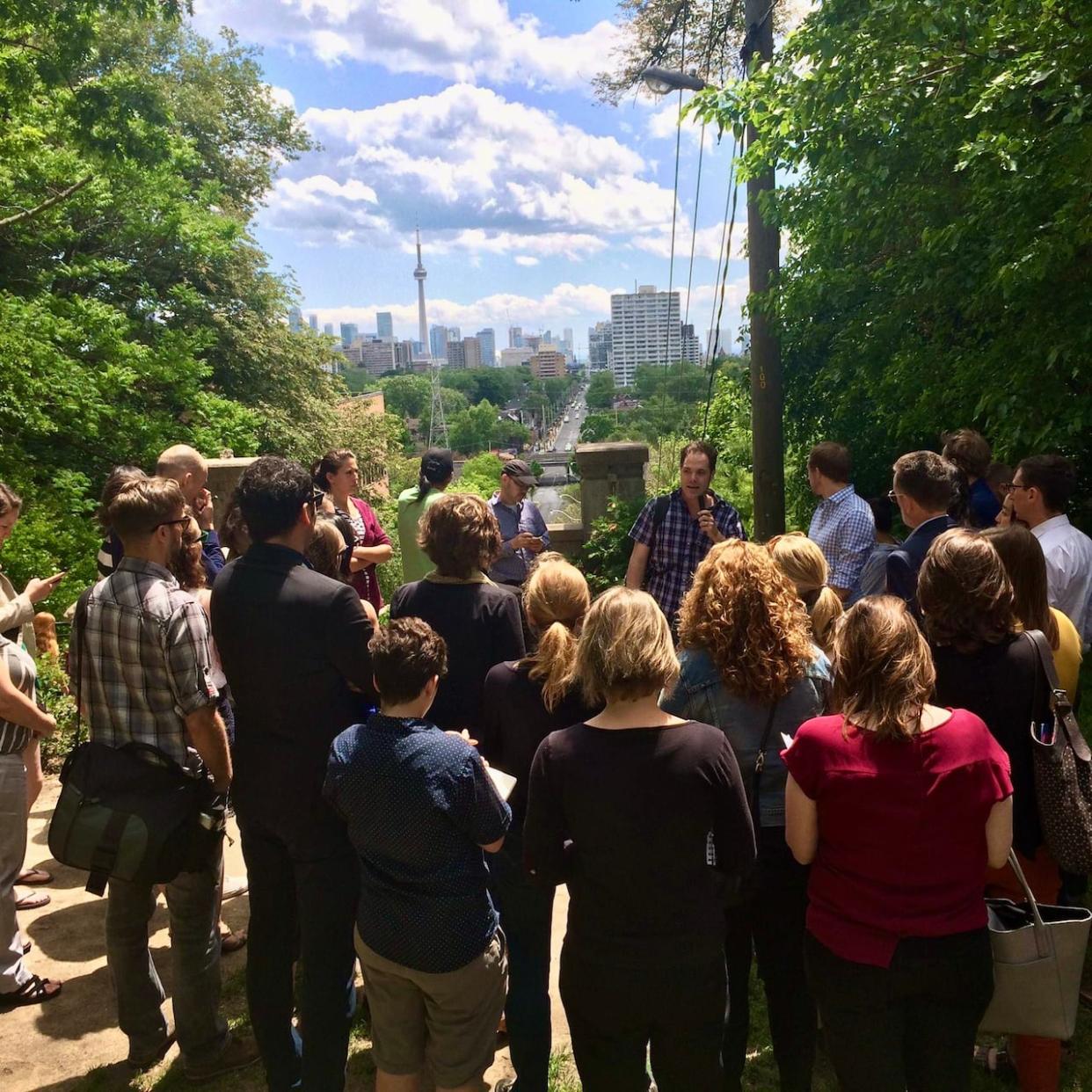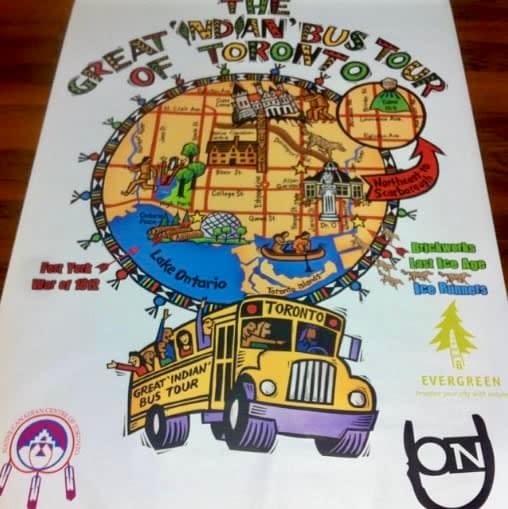Ancient remains found in Toronto neighbourhood likely from a Huron-Wendat burial

Human remains from a potential Huron-Wendat ossuary were unearthed in Toronto's North Riverdale neighbourhood last Friday.
Jon Johnson, an assistant professor at the University of Toronto and one of the lead organizers of First Story Toronto, an Indigenous-led organization that researches and shares Toronto's Indigenous history through public education initiatives, said that although it might be considered a "multi-component site" because of multiple settlements in the area and layers of history dating back about 13,000 years, he believed the remains belong to those of the Huron-Wendat nation.
He said when nearby Withrow Avenue Junior Public School was built, workers encountered artifacts and remains that were traced to the Wendat people.
"The Wendat have a very long presence in Toronto that goes back 1,000 years at least before Europeans ever even came to the area," Johnson, who is French-Canadian, told CBC Indigenous.
"There's hundreds and hundreds of Wendat sites in the Toronto area alone."
He said the remains are consistent with Wendat burial practices.
Greg Olsen, a forensic anthropologist for the Ontario Forensic Pathology Service, was called to the scene by Toronto Police on Saturday to investigate after construction workers, installing a water line, found what they believed to be human remains.
He said he found the remains of at least three people at the site. Based on the long bones and teeth he examined, he said he believed it was consistent with an Indigenous burial site. He said teeth can be especially helpful as central incisors of Indigenous people are more shovel-shaped than those of Caucasians and molars can show distinctive wear patterns from eating stone-ground corn.
Olsen is familiar with Huron-Wendat villages, having studied one just outside of Coldwater, Ont., for many years.
He said Huron-Wendat built their villages close to water for drinking, cooking and transportation — but also favoured locations on hills "so they could watch for their enemies."
He said that they would move the village periodically to avoid soil depletion for their crops. Their dead would be initially placed outside of a longhouse and covered with stones but when the village site was moved, they would be reinterred in a group burial in a hollowed-out area in the ground, called an ossuary.
"That's exactly what we're finding here," Olsen said.
Olsen said the chief coroner has made arrangements for two bands, Missisisaugas of the Credit First Nation and Six Nations of the Grand River, to collectively make a decision regarding the remains.
For now, he's reinterred the remains and held a tobacco ceremony to close the area.
Mark Laforme, director of the department of consultation and accommodation for the Mississaugas of the Credit, said they will be overseeing the investigation but it's too preliminary to make a decision regarding the findings.
"These remains were found on the treaty lands of the Mississaugas of the Credit," he said.
"As the treaty First Nation, we feel that it's our obligation to ensure that those remains are treated with dignity and respect, regardless of who they belong to."
Rose-Marie Ayotte, a spokesperson for the Huron-Wendat Nation in Wendake, Que., sent an emailed statement to CBC Indigenous.
"As the site sits on the traditional territory of many nations, and with due respect to our brothers and sisters of the other nations possibly involved, we don't want to give any interview until we are deeply certain that it's a Wendat burial," the statement said.
Life along the Don
In Johnson's research of Toronto's Indigenous history, which began with Rodney Bobiwash and his partner Heather Bobiwash as part of the Native Canadian Centre's Great Indian Bus Tour, he said he learned lots about the city not widely known by the average Torontonian.
Johnson said at one time the Humber River, the Rouge River and the Don River, which runs near the Withrow Avenue site, were main travelling routes.

Rodney and Heather Bobiwash ran the Native Canadian Centre’s Great Indian Bus Tour, which presented Toronto's Indigenous history. (Submitted by First Story Toronto )
In the 1600s, the Wendat, overwhelmed by disease and warfare, were pushed out by the Haudenosaunee and dispersed to Wendake and Oklahoma and other communities in the United States. Some were adopted or absorbed into the Haudenosaunee nations.
He said he's learned that the Don River had at least two Anishinaabe names.
Wonscontonach means a place that has been swept by fire. The lower reaches of the Don River and parts of what is now Rosedale and Deer Park were a savanna managed by Indigenous people through controlled burns, said Johnson.
"They were burning back areas of old growth forest to open them up as these really rich, open savanna environments that would invite deer and other game and a vast variety of medicine plants that would be useful to them," he said.
"They were creating their own hunting grounds and medicine grounds through controlled use of fire."
The other name is nichinggaakokanik, which Johnson said could refer to a good place for pines, referring to these red pine savannas.
"If you understand what the name means and how it relates to Indigenous peoples' use of the area, then it really is a mapped territory and … a story of people's relationship to their place," he said.


